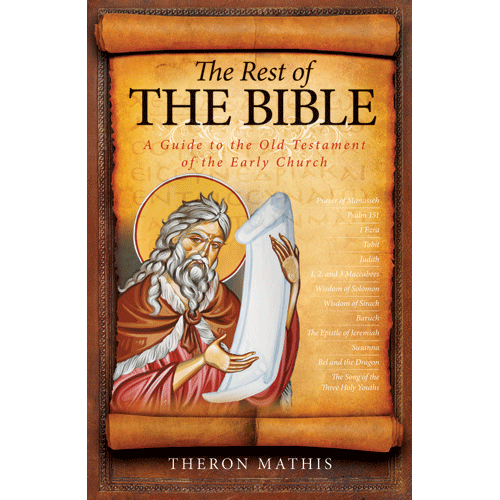|
|||
|---|---|---|---|
| This weekly bulletin insert complements the curriculum published by the Department of Christian Education of the Orthodox Church in America. This and many other Christian Education resources are available at http://dce.oca.org. | |||

The New Testament portion of every Bible is the same. There are 27 books, and they are in the same order. But the Old Testament is a very different matter. Protestant Bibles contain 39 books called "canonical" or, in other words, accepted as authentic and inspired. These are the books of the Hebrew Bible. But the Orthodox Old Testament contains several more books, as does that of the Roman Catholic Church. The Orthodox Old Testament canon, the group of books regarded as canonical by the Orthodox Church, is based on the Septuagint. This is the translation of the Old Testament from Hebrew to Greek that was produced by scholars between 300 and 200 BC. It was created, at least in part, as a way of making sure that Hellenistic Jews, among whom the understanding of Hebrew was being lost, could read the Old Testament. In the tenth century, all but 39 books were rejected by Jewish scholars. Their canon was the one accepted later by the Protestant reformers. The Septuagint is the version of the Old Testament from which Saint Paul and the other apostles quoted, and many Church leaders used it as well. It is the version the Church inherited from the apostles, and therefore the Orthodox regard it as inspired. The name "Septuagint" refers to the number seventy, because it is traditionally understood that seventy scholars worked on the translation. Theron Mathis has written a book entitled "The Rest of the Bible" as a way of acquainting readers with the books included in the Orthodox Old Testament that might be unfamiliar to many. As he points out, the books tell fascinating stories, and enhance our understanding of those parts of the Old Testament that we may know better. These less familiar books also offer moral teaching and describe virtuous lives. Saint Athanasius and others used them to instruct those preparing for baptism; they are valuable to modern Christians, too. In Mathis' book we read about Susanna, who is called "the Righteous" and whose story is contained in the book of the prophet Daniel. Susanna was a devout Jewish woman who, because she would not satisfy the desires of two elders who lusted after her, was falsely accused of immorality and therefore faced a death sentence. She stood alone against her accusers, without the support of her family or friends. It was the young Daniel who came to her defense and uncovered the lies of those who were trying to have her executed. Another story in Mathis' book is about Esther, the Jewish woman who became a queen in Persia and saved the lives of her people. But as Mathis points out, the Septuagint has a longer version of Esther than appears in Protestant Bibles, and the extra verses add depth and richness to the account of what she did and who she was. "The Rest of the Bible" (available from Conciliar Press) is a good companion book to the Orthodox Study Bible, which is based on the Septuagint. Mathis invites us to "pick up an OSB and read along!" |
|||
